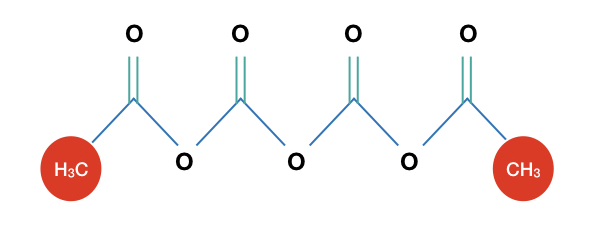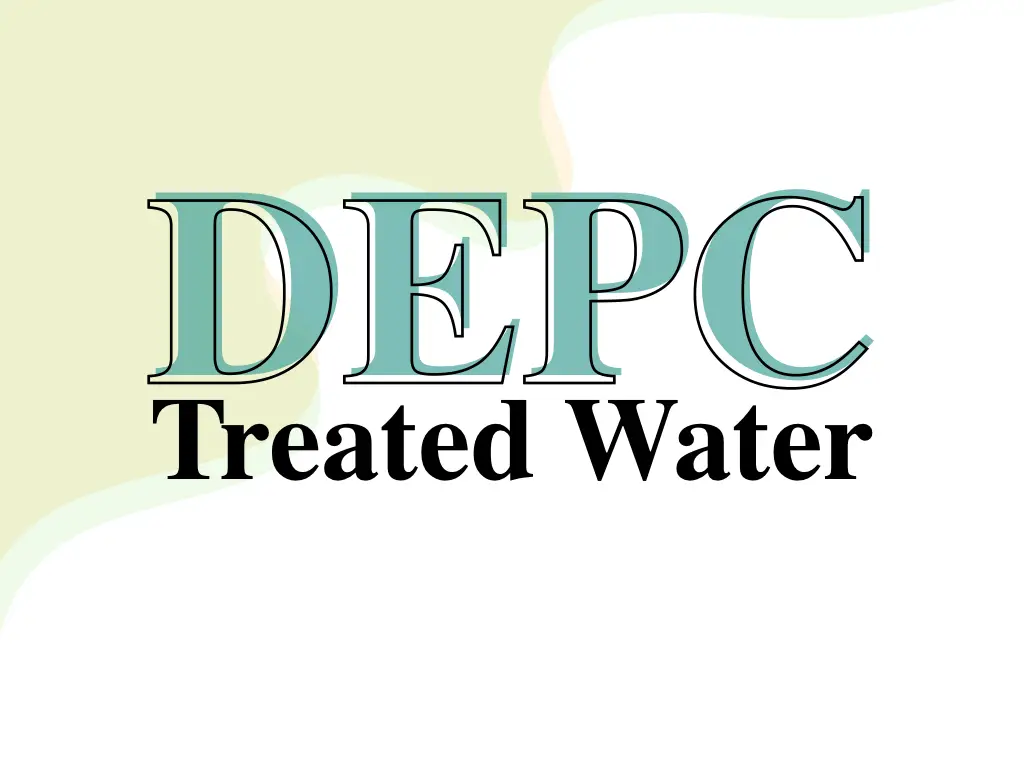“DEPC (Diethyl pyrocarbonate) is a nuclease inhibitory agent, used in the RNA isolation to inactivate the RNase enzyme.”
The single-stranded structure of the RNA makes it more degradative than DNA, thus effective care must be taken while isolating RNA. Besides, the highly unstable nature of the RNA and the predominant presence of the RNase enzyme elevates the difficulty level even further.
RNA extraction is henceforth a sensitive technique, therefore experience is required to isolate pure RNA. We need to isolate RNA because it is so important for gene expression studies, pathogen detection, validation and classification.
Extracting RNA is a challenging job, yet we have several options using which the isolation can be achieved effectively. For example, the use of RNase inhibitors, RNA stabilizers and DEPC water etc.
DEPC is so important in this process. Often known as ‘DEPC-treated water’ is prepared in the lab and used to wash common glass and plasticware for the RNA isolation. But there is a process to use it, can’t be used directly.
In the present article, I will explain what DEPC-treated water is and how to prepare it. I will also discuss how to use it in the form of, “11 effective ways to use DEPC-treated water in the RNA extraction.”
Key Topics:
What is DEPC-treated water?
DEPC-treated water is Diethyl pyrocarbonate water commonly used during RNA isolation. Pyrocarbonic acid diethyl ester, ethyl formic anhydride, diethyl oxydiformate and diethylpyrocarbonate are several other names of it.
| DEPC | Diethyl pyrocarbonate |
| Chemical formula | C6H10O5 |
| Boiling point | ~94ºC |
| Appearanace | Clear, colorless and liquid |
| Density | 1.101 g/mL |
How to prepare DEPC-treated water?
- Add 1 ml of 0.1% v/v DEPC to 1000 ml distilled water
- Mix it properly and allow it to react at room temperature for at least 1 to 2 hours (at 37℃).
- Stir on an orbital shaker or 20 to 30 min on a magnetic stirrer.
- Autoclave it to remove the excess traces of DEPC.
- Cool it at room temperature and store it aseptically.
Note: upon autoclave, the DEPC-treated water produces CO2 and ethanol which is toxic to us. So handle it with care.
Importance of DEPC-treated water:
DEPC-treated water is an important ingredient in RNA isolation which inactivates the RNase enzyme activity. Ribonuclease (RNase) is a hydrolytic enzyme that degrades in vivo and in vitro RNA thereby controls the activity of transcription and translation.
DEPC-treated water performs a covalent modification in the histidine, cysteine, tyrosine and lysine residues of the RNase enzyme which eventually reduces the binding and catalytic efficiency of the enzyme. Higher the amount of DEPC more strongly inhibitory activity against the RNase.

11 Effective Ways to Use DEPC-treated Water in RNA Isolation:
In this section of the article, I will explain how you can effectively use the DEPC-treated water during RNA isolation.
Autoclave lab prepared DEPC:
DEPC itself is a non-specific inhibitor for RNase, however, it should be autoclaved, prior to use. Standard lab practice doesn’t support DEPC-treated water autoclave as it produces carbon dioxide and ethanol as byproducts. Carbon dioxide is dangerous to us and ethanol may get fire.
But, on the other hand, autoclaving DEPC may reduce the amount of DEPC residual traces, and removes CO2 and alcohol from the treated water which is further important for the isolation process.
Autoclave inactivates DEPC, use the formulate “15 min/per liter” to autoclave the DEPC-treated water.
Treat everything with DEPC:
It is important to use DEPC-treated water in every possible step during RNA isolation. All common utilities starting from common glass and plasticware, micropipette, micropipette tips, tips box, tray and all tubes are washed using the DEPC only.
Take necessary precautions, expert advice and follow common lab safety guidelines.
Autoclave + DEPC-treated water:
The standard, conventional and trusted method to decontaminate anything in a molecular or microbiology lab is autoclaving. The high temperature and pressure of the autoclave remove all the pathogenic and other contaminants present.
“Some” solutions, glassware and plasticware are usually autoclaved routinely (only if they are autoclave grade). Such a process is also followed to deactivate enzymes like RNase but autoclave isn’t enough to deactivate all types of RNase completely.
Therefore it is highly advisable to treat every utility with RNase inhibitor even after autoclave. The use of DEPC will remove and inactivate all types of RNases. Still, care must be taken to not expose anything to a non-sterile atmosphere.
However, it isn’t necessary to follow this pattern, some laboratories and researchers first treat utilities with DEPC and then autoclave them.
Fun fact:
You may smell the sweety, fruity odor of DEPC-water because of the production of EtOH.
Prepare all the reagents only with DEPC-treated water:
To suppress the catalytic activity of the RNase in all the reagents and solutions, prepare every chemical using DEPC-treated water only when required. Note that Tris-containing solutions aren’t prepared using DEPC as it inactivates Tris also.
One can use DEPC for buffers like PBS and MPS but not for HEPES or TE. Note that DEPC can’t directly be used for HEPES, TE, TBE or TAE buffers, but the DEPC-treated water can be used. Keep this point in a note while doing RNA extraction and preparing various buffer systems for it.
DEPC-treated water is toxic:
One effective way to use DEPC in molecular biology experiments is to use it with caution. DEPC is toxic, carcinogenic and hazardous to health and thus must be handled with care. Experienced lab personnel, a separate setup and standard SOP are required to use the DEPC, DEPC-treated water and relevant processes.
It is als notable that the DEPC inhibits PCR reaction too and therefore, separate DNA extraction and PCR setup from RNA isolation, DEPC treatment and preparation.
Use 1% DEPC if required:
Most of the time, the 0.1% DEPC is sufficient enough to inactivate all the RNase, but sometimes it fails to do the job. It happens because the RNase is present everywhere.
In such cases, if you can’t get good results, use 1% DEPC-treated water. Although, incubate it at room temperature to inactive the excess traces of the DEPC.
The half-life of DEPC in water is around 30 minutes.
Use an appropriate amount of DEPC:
A higher concentration of DEPC in the DEPC-treated water may also not be recommended. Traces of DEPC modifies the adenine bases present in the nucleic acid, thus it changes the chemical properties of the RNA and affects the in vitro gene expression activities.
Remove all the traces of DEPC for sensitive, gene expression and transcriptional activity experiments. Avoid contact of DEPC with direct live cells such as cell suspension or culture.
Use DEPC-treated water for gel electrophoresis:
Often the most common RNase contaminant is gel electrophoresis and assembly which degrade RNA and result in false-positive results. It is advisable to treat all the gel electrophoresis utilities like gel cast, gel comb, and buffer chamber with the DEPC to make it RNase-free.
Also, prepare gel and buffer in DEPC-treated water only.
Maintaining the strength of DEPC-treated water:
Over the period of time, DEPC may evaporate and lose the strength of treated water. Repeated use for a long time causes problems in isolation, sometimes. Thus it is important to store the DEPC-treated water correctly to maintain its strength for long.
Store it at room temperature, in a common-transparent bottle, do not heat it, and avoid direct exposure to UV light.
Pre-treat all the utilities with alcohol (70%):
You may wonder if alcohol can do the job, why do we have to use the DEPC-treated water and put ourselves in danger?
Alcohol can’t directly inactivate the RNase, that’s true but, pre-washing all the utilities with alcohol cleans it up and removes viruses, bacteria, and other cells like dead skin or epithelial cells from the surface.
These are the common sources of RNase, we know that. So to effectively use the DEPC-treated water and to improve its working strength, pre-treat all the utilities (tips, pipettes, tubes and other glass and plastic wares) with 70% alcohol.
Physical examination of DEPC-treated water:
It is also important to timely investigate the purity and activity of DEPC-treated water by physical examination. Check if the solution is turbid, precipitated, has visible impurities and is crystal clear or not.
Do not use it if the color or physical appearance of the DEPC-water is altered.
Read more: 21 Things to know for Effective RNA Extraction.
Wrapping up:
DEPC-treated water is an important ingredient of molecular biology as it can not only inhibit RNase but also other histidine-containing enzymes like acetylhydrolase. Furthermore, it can also inactivate platelet-activating factors.
I personally, highly advise using ready-to-use DEPC-treated water rather than lab-prepared as it is toxic to us. If you want to learn more on RNA isolation you can read our previous articles too.


